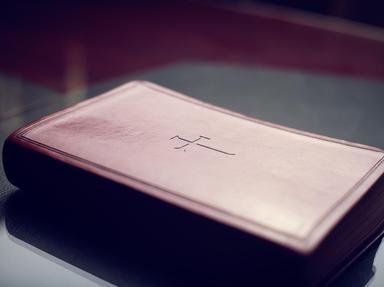Quiz Answer Key and Fun Facts
1. In the Prado altarpiece by Fra Angelico, we notice a couple leaving a beautiful garden. But the main interest is not there: we see a young blonde woman in a blue cloak, and a winged person looking at her. What are the first words the winged person said in this setting, according to Luke 1: 28?
2. The next painting, by Sandro Botticelli, looks quite crowded. We see twelve winged women dancing in the clouds, while three winged women sit on the roof of a stable. At the left and the right a winged person convinces three men to look at the central scene, which I'll describe next. On the foreground of the painting three winged women are each kissing a man. But the central scene has given the name to this painting: a naked baby lies on the ground, a mother is watching over him (as well as an ox and a donkey), and an elder man supports the baby. What is this baby's name?
3. The next scene was painted by several artists. I chose the painting by Fra Bartolomeo, which shows us a woman holding an infant upon her lap, an elderly man kneeling at her side, and a donkey resting in the shade of a palm tree. The family here depicted is Joseph, Mary and Jesus, but where are they heading to?
4. Juan de Flandes made a painting in which a man in a pink cloak pours some water over a man who's wearing only a loincloth. To the left, a winged person holds the cloak of the bather. On top of the painting, we see a dove flying right above the bather, and a bearded man surrounded by some youngsters hovering above the dove. In what river is this scene set?
5. Now we move on to a painting by the well-known artist Rafael. In Rafael's painting, we see a multitude of people in the foreground, befuddled by what is happening higher up. On top of a mountain, three apostles wake up from a short nap. But the most intriguing is the air in which three people are seen levitating: a bearded man carrying a slab of stone, a young man dressed all in white and a bearded man carrying a very thick book. Who is the flying man with the stone slab?
6. The painting which you will try to recall for this question, is very crowded. In the centre of the painting a young man in pastel colours (pink robe, lilac overcoat) holds up his right hand, as if summoning attention. His left hand points towards a dark-skinned adult man, swaddled in white strips of linen. I'm aware that this description will not help you to pick the right answer to my question, so I'll add two details: a young girl turns away from the man in white linen, and a bearded man to the very right of the picture uses his sleeve as if it were a handkerchief, in a vain attempt to avoid the stench. Who is the man in white stripss of linen?
7. What's the name of da Vinci's painting in which we see exactly thirteen persons? Please answer in English only.
8. The Isenheim altarpiece by Matthias Grunewald is usually seen with closed wings. In this view, we see a very disturbing crucifixion: a tormented body hangs on a cross. To the left the Christians recognise John the Baptist (who was by the way already dead when this event happened), to the right we see two women and the disciple Jesus loved. One of the women faints, and the disciple holds her in his arms. According to the Gospel of John, who was this disciple?
9. Andrea Mantegna painted a dead man lying on his back, seen from the feet up. Both feet and both hands show distinctive wounds. To the left, an old woman is mourning over him. Who is the deceased (bearing in mind that this is a religious painting)?
10. In a painting by Caravaggio, we see a table set with bread, a carafe of wine, a bowl of fruit and a roasted chicken. A servant stands to the left, and three men sit at the table. The central character, a young person in a red robe and white cloak, makes a blessing gesture over the food. In what biblical place does this scene take place?
Source: Author
JanIQ
This quiz was reviewed by FunTrivia editor
CellarDoor before going online.
Any errors found in FunTrivia content are routinely corrected through our feedback system.

